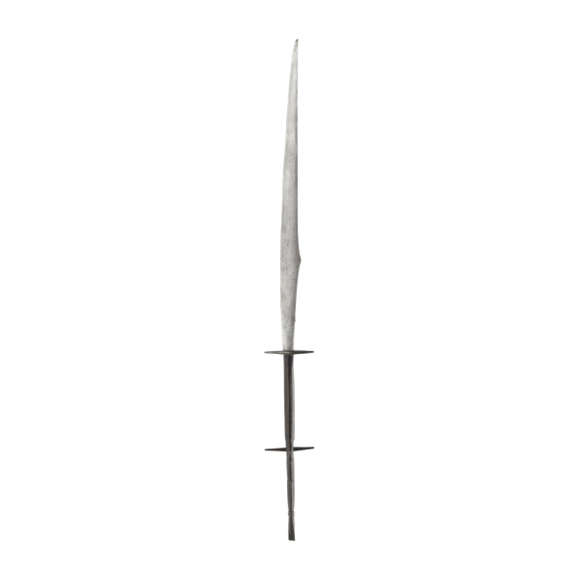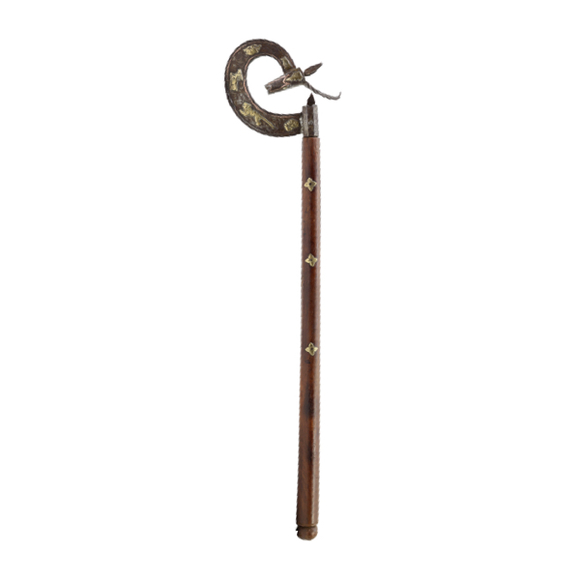These mysterious weapons were already obsolete when the first ethnographers encountered them.

77 - 77.5 cm
70.5
(inside nock to base head)
Length 54 - 60 mm
Width 14 - 17 mm
Thickness 2 - 3.5 mm
Average 34.4 grams
4 x 27 grams
1 x 28 grams
3 x 29 grams
1 x 30 grams
2 x 31 grams
1 x 32 grams
13 - 27 cm from tip
North India
Steel, bamboo, copper, horn, bone, ivory, pigments, lacquer
Probably 18th century
A set of 12 matching arrows, north Indian type. The heads are made to mimic the shape fo the katar, a type of push dagger that was popular as a side-arm in India.
Foreshafts are reinforced with rings of iron, copper and decorated with pieces of inlaid horn and bone. The shafts are darkened to a nearly black dark brown with a nice deep patina.
The tail ends are painted with red and green decorations. Feathers are lost, but we can see they used to be three fletched, with the leading feather pointing up, the other two diagonally down, as was usual in most Asian cultures.
The bulbous nocks are made of ivory, painted vermillion on the inside.
CITES
To meet the demands of the Convention International Trade of Endangered Species (CITES), this object is offered with documentation from a third party that states that the arrows are antique. The nocks are of ivory of the species elephas maximus, listed on CITES appendix I.
The item is within article 2 of council regulation EC NO338/97 and within Convention of International Trade of Endangered Species (CITES): The materials were removed from the wild and significantly altered from their natural state well before the date of the convention: June 1st, 1947. It can be freely traded within the EU without a permit and is eligible for a CITES export permit for trade outside of the EU.
Buyers outside of Europe: Beware that it may not be possible to export the item to your country due to restrictions on international ivory trade. CITES sets the minimal restrictions, countries and states under the convention often maintain further restrictions on top of CITES.









This peculiar sword was used by the Garo people of Assam for fighting, clearing the jungle, and animal…
A what? Yes exactly. An extremely rare piece, the only example I am aware of in published collections at…
With designs of animals, often attributed to Lucknow, north India.
Nice and complete with opaque green hilt and scabbard mounts.






